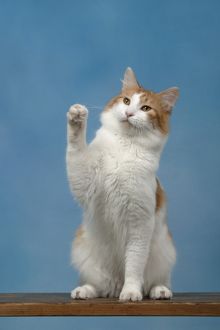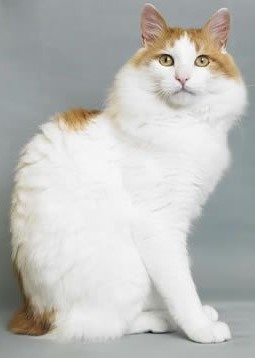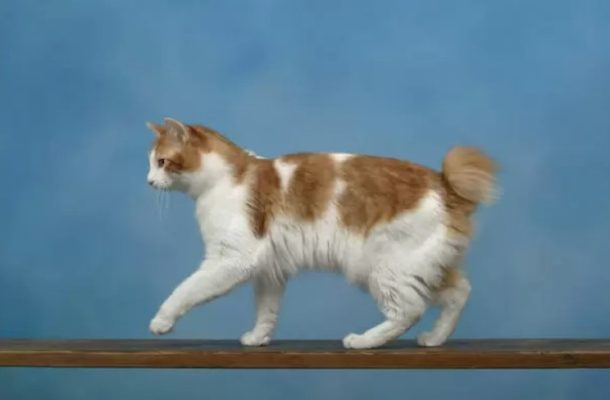Japanese Bobtail Longhair
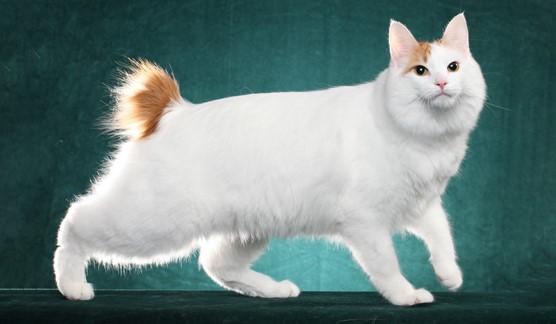
The Japanese Bobtail Longhair is madly appreciative of human companionship. Historically, the Japanese Bobtail has always been surrounded by people. Therefore, it is not a breed that enjoys being alone. The Japanese Bobtail can draw attention to itself with its voice, only for a person to play or pet it. It is better not to leave the cat alone for a long time; it can get very boring. Good relations with people in the Japanese Bobtail Longhair are genetically inherent.
Table of Contents
Breed Information
| Origin | Japan |
| Size | 25-30 cm |
| Weight | Males 3.6-5.4 kg Females 2.7-3.6 kg |
| Fur Type | Semi-long-haired |
| Color | All except chocolate and purple variations and colorpoints are recognized |
| Lifestyle | Outdoors, indoors |
| Lifespan | 15-17 years |
| FIFe Classification | Category III: “Short-haired and Somali” Breed designation – JBT |
| WCF Classification | Group 2: “Semi-long-haired” Breed designation – JBL |
| TICA Classification | JB |
| Group | Long-haired cats, cats for kids |
| Price | $600-1000 |
Breed Photos
Origin History
A whole book could be written about the history of the Japanese Bobtail Longhair breed. These cats saved an entire country, their homeland, Japan.
The first images of cats with short tails surrounded by beautiful women were found in the XV on Japanese paintings. In 1602, Japanese Bobtails were released into the streets, proving their worth in catching mice. Cats filled the streets and practically took the place of stray dogs. Even today, it is not uncommon to see this breed on the streets of Japan.
In 1960, American Judy Crawford and Elizabeth Freret fell in love with the breed and became officially engaged in its breeding. Crawford even founded a school for aspiring breeders. In 1993, the breed was officially allowed to participate in shows. In Great Britain and Europe, the Japanese Bobtail Longhair never found the proper popularity.
Appearance
The Japanese Bobtail Longhair has a muscular, stretched body. The sides are hollow; the back is straight and strong. The neck is massive and proportional to body length. The head has the shape of an equilateral triangle of medium length. The muzzle is round and fairly wide. The ears are slightly inclined forward, mobile. The eyes of the Japanese Bobtail are large, have an oval shape. Kittens whose eyes have different shades of eyes are more expensive.
The tail is unique for each cat, consists of curls, and should not be longer than 8 cm. It resembles a pompom or a rabbit’s tail. It makes no difference in which way it looks. The ideal tail is considered to be curled in the form of a chrysanthemum. It can be flexible or stiff.
The coat is soft, with an undercoat. Long enough, it is especially pronounced on the tail and paws. All colors are allowed, but the pattern of spots must be clear. It may be tabby or solid in appearance. Chocolate, colorpoint, or mauve are not allowed. The most preferred two-color and three-color coloration.
Character
The Japanese Bobtail Longhair is madly appreciative of human companionship. Historically, the Japanese Bobtail has always been surrounded by people. Therefore, it is not a breed that enjoys being alone. The Japanese Bobtail can draw attention to itself with its voice, only for a person to play or pet it. It is better not to leave the cat alone for a long time; it can get very boring. Good relations with people in the Japanese Bobtail Longhair are genetically inherent. He becomes attached to all family members and is very fond of children.
Cats of this breed have a great interest in life, constantly exploring everything, controlling the house, and genuinely surprised by new things in the interior. The Japanese Bobtail Longhair has a wonderful hunting instinct, so you should think carefully before bringing birds, rodents, or fish into the house. But Bobtails get on well with cats and dogs, but acquaintance needs to be carried out gradually.
You have to have a clear schedule with this pet. The fact is that the Japanese Bobtail remembers everyday things and rituals. It is enough to feed him once late at night, and already the next day, the cat will demand a portion at this time. Therefore accustom the pet from childhood to the convenient time for you to feed.
Care
You will need special drops, a cotton swab, and warm water to take care of the ears. Keep them clean every week to avoid infections. Once every few weeks, you should brush the cat’s teeth with a special toothpaste. If the cat is accustomed to it since childhood, there should be no problems with the procedure.
It is worth paying attention to the care of the cat’s long hair. You should brush it daily with a special brush with rounded teeth. You should not bathe your cat more than once a month. There are special dry shampoos, which will help keep the coat fresh without contact with water. Claws should be trimmed once every few months. Many owners of Japanese Bobtail Longhair prefer to walk their pets outside. It is recommended to buy a special leash and collar against parasites.
Education
The Japanese Bobtail Longhair has a flexible and sharp mind. He can easily open the door, be anywhere in your house, and you will puzzle over how the cat did it. That said, the Bobtail quickly grasps the basics of training and is easy to learn.
The Japanese Bobtail has a childlike spontaneity all his life. He can be carried away with a game with a ribbon chase and more intellectual toys at any age. Moving games are good for the Bobtail; they will be a great workout and keep the cat in shape.
Common Diseases
The Japanese Bobtail Longhair is a fairly healthy breed with a strong immune system. The cat has no ailments related to the tail. But because of its active lifestyle, the Japanese Bobtail can catch pests in the street.
There are no specific diseases to which the Japanese Bobtail Longhair is prone. If you combine a balanced diet, proper care and do not allow your pet to overcool, your pet will live a happy and healthy life.
Nutrition
The Japanese Bobtail Longhair consumes a lot of energy during the day. Therefore, the diet must contain a sufficient amount of meat. Dairy products, eggs, low-fat fish can be given. Useful vitamin supplements and minerals should be added to the diet. Change the water several times a day. Do not use plastic bowls, which become dirty quickly. The cat should eat from ceramic dishes or stainless steel bowls.
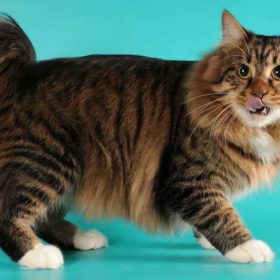 American Bobtail Longhair
American Bobtail Longhair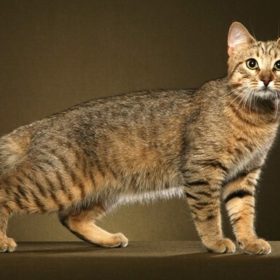 Pixie-bob Shorthair
Pixie-bob Shorthair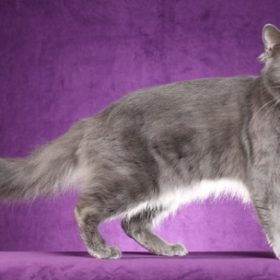 Nebelung
Nebelung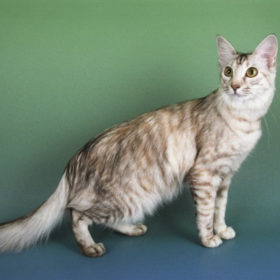 Oriental Longhair
Oriental Longhair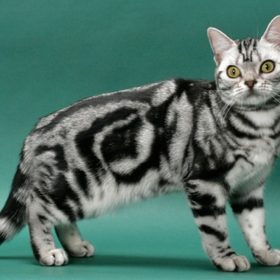 American Shorthair
American Shorthair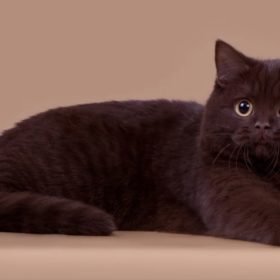 York Chocolate
York Chocolate